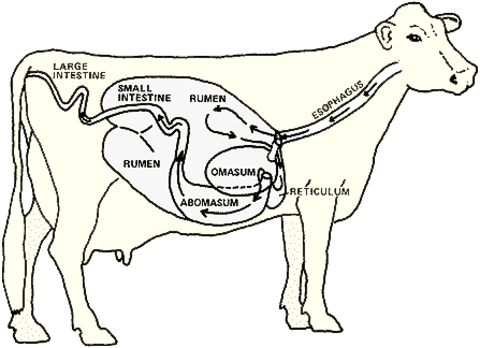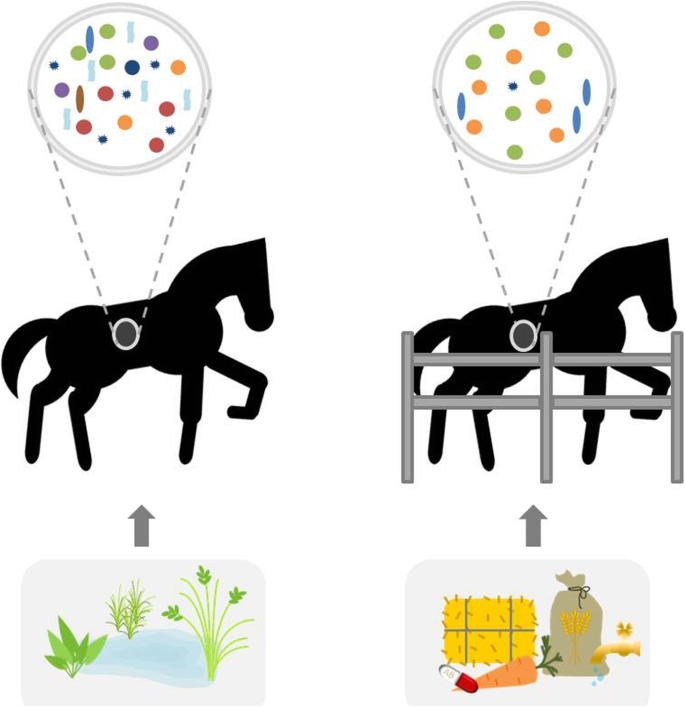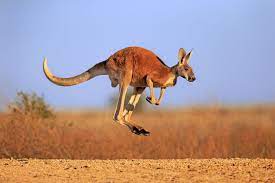122 Guardians of the Gastrointestinal System
boelk019; paull026; and schwi280
What are microbes?
Learning Objectives
- Understand what a microbe is
- Identify which species use microbes for digestion
- Understand how digestion/fermentation work
- Explain why some animals/humans cannot digest plants
Introduction to Microbes
A microbe is a living thing that is not able to be seen with the naked eye. They can be found anywhere. They can be found in things like water, air, digestive systems of animals, and even on your skin? They have many different functions/capabilities, and they can either be harmful or beneficial to the body. The harmful ones can cause damage to the body and cause disease. The ones that are beneficial to the body serve as protection to keep pathogens and bacteria out or help with digestion through the fermentation process in some species. Some animals depend heavily on these microbes for digestion because of the nature of their diet. They consume things like grasses, hay, plants, and bamboo! Without these microbes, these animals would not be able to digest these materials to meet their dietary requirements. The microbes that are in the gastrointestinal tracts of these animals is able to break down things like cellulose. This is what makes these animals very unique! Animals that have microbes for fermentation/digestion are ruminants (cows, sheep, goats), kangaroos, pandas, koalas, llamas. Humans, dogs, cats, pigs, and chickens are some animals that do not contain microbes for fermentation. In this chapter, we will be discussing some different species and what makes them unique.
Ruminants

Animals are classified as ruminants if they contain a four compartment stomach. Those animals include cattle, sheep, and goats. Ruminants’ stomachs are divided into four sections: rumen, reticulum, omasum, and abomasum. The rumen is where plant materials are broken down and fermented and is where the microbes live. There are a wide variety of microbes that live in the rumen that are too numerous to count. The microbes like a pH of about 6 for optimal activity. The microbes are responsible for keeping pathogens out, stimulate the immune system, produce vitamins, and supply the animal energy by breaking down glucose, protein, and fats. The microbes contain things like cellulase that can break down plant material. The cow eats big meals which pass from the reticulum to the rumen and back to the mouth if it needs to broken down into smaller pieces (chewing cud). They can provide the cow things like ammonia and volatile fatty acids that they can use for energy and other metabolic needs. Further digestion happens when it enters the omasum and abomasum.
Horses
Horses have evolved a unique digestive system that heavily relies on their gut microbiome. Horses have a hindgut comprised of a cecum and a colon that is home to a microbiota that allows them to eat high-fiber forages, like hay and grass. These bacteria ferment foods to generate energy for the animal. Horses can host up to 1 quadrillion (1015) bacterial cells in their GI tract which provides a substantial portion of the animal’s daily energy needs. As you can probably guess, the food that the individual horse eats can have a strong influence on the components of the gut microbiome. For example, you’d expect to see major differences in non-domesticated horses that eat whatever they can find in the wild versus domesticated horses that are more likely to have carefully calculated diets. The microbiota of wild horses would be much more varied due to the diversity in the food the horse is ingesting. Imbalances in the microbiome (also known as “dysbiosis”) can lead to major issues for the horse, like colic or inflammatory intestinal diseases.

https://animalmicrobiome.biomedcentral.com/articles/10.1186/s42523-019-0013-3
Kangaroos
Kangaroos are herbivores and in a class of animals called macropods which also includes wallabies and quokkas. Similarly to cattle they rely on fermentation for much of the digestion process and can also spit up and reswallow cud. However, their stomachs vary from that of cattle and other fermenters. There are four parts to a kangaroo stomach and it is divided into two unique forestomach parts, the sacciform and tubiform, and a hindgut with two parts that more closely resembles the stomach of other mammals. Today we will mainly focus on the forestomach parts. The design of their stomach and a symbiotic relationship with microbes in the forestomach allows kangaroos to conserve water, nitrogen, and energy very effectively.

When a kangaroo eats food it enters into the forestomach from the oesophagus where it finds a groove that separates ingesta into coarse and fine material. Fine material is directed to the hindgut where hydrochloric acid and proteolytic enzymes (substances used to aid in the breakdown of protein) are released creating a pH of 1.8-3.0 in the environment and working to break down protein from plants and bacteria. Coarse material is directed to the forestomach for fermentation by bacteria. The lining of the forestomach does not release acid or proteolytic enzymes and has a pH of about 4.6 (pH scale is 0-14 with 7 being neutral and anything below is acidic while above is basic) which rises to around 8 after eating. Maintenance of a pH greater than 7 in the fore-stomach allows for the growth of bacteria and both sections of the fore-stomach have large populations of bacteria with 10^10/mL of bacteria and 10^6/mL of ciliated protozoa. These bacteria digest the cellulose of plant cell walls creating short chain fatty acids and releasing other cell contents at the same time. These can then be digested by the kangaroo and by the bacteria themselves meaning they both benefit which is why it is said that this is a symbiotic relationship. Due to fermentation taking place in the fore-stomach, the cecum and proximal colon (hindgut components responsible for fermentation) are smaller in kangaroos than in other related species.

Learning Activity

